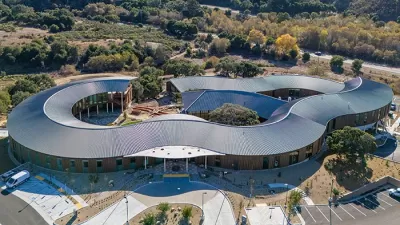Elizabeth Burton reminds us of the close connection between housing and health, and proposes better ways to gauge how housing may affect the health and well-being of residents.
Until the early 1900s, asserts Burton, the relationship between housing and health was seen as inextricably linked. Over time, health moved into the domain of healthcare provision, architecture became more closely aligned with art, and town planning with economic and environmental concerns. Shining light on the health challenges of contemporary life, including the rise of lifestyle-related diseases, coupled with increased human longevity, she urges us to do away with these artificial silos, and to realign our concerns with health and well-being by envisioning the "housing of the future”.
When Burton refers to health, she is referring to more than just physical health and obesity, but rather overall well-being and happiness. She points to several possible key features for designing homes with well-being in mind-- including the provision of “better space” that is organized and designed to accommodate families as they relax together or alternatively, as each member does their own thing. Other features in housing could aim to “boost our mood” such as the incorporation of abundant natural light and views of green space.
Finally, she compares the possibility of a rating system for housing to that of rating food, "[j]ust as for food we know not just what we like to eat but also what is likely to be good for us, [similarly] in housing we could know a bit more about how a home is likely to affect different aspects of our well-being."
FULL STORY: Cities of the future should be designed with wellbeing in mind

Planetizen Federal Action Tracker
A weekly monitor of how Trump’s orders and actions are impacting planners and planning in America.

Congressman Proposes Bill to Rename DC Metro “Trump Train”
The Make Autorail Great Again Act would withhold federal funding to the system until the Washington Metropolitan Area Transit Authority (WMATA), rebrands as the Washington Metropolitan Authority for Greater Access (WMAGA).

The Simple Legislative Tool Transforming Vacant Downtowns
In California, Michigan and Georgia, an easy win is bringing dollars — and delight — back to city centers.

The States Losing Rural Delivery Rooms at an Alarming Pace
In some states, as few as 9% of rural hospitals still deliver babies. As a result, rising pre-term births, no adequate pre-term care and "harrowing" close calls are a growing reality.

The Small South Asian Republic Going all in on EVs
Thanks to one simple policy change less than five years ago, 65% of new cars in this Himalayan country are now electric.

DC Backpedals on Bike Lane Protection, Swaps Barriers for Paint
Citing aesthetic concerns, the city is removing the concrete barriers and flexposts that once separated Arizona Avenue cyclists from motor vehicles.
Urban Design for Planners 1: Software Tools
This six-course series explores essential urban design concepts using open source software and equips planners with the tools they need to participate fully in the urban design process.
Planning for Universal Design
Learn the tools for implementing Universal Design in planning regulations.
Smith Gee Studio
City of Charlotte
City of Camden Redevelopment Agency
City of Astoria
Transportation Research & Education Center (TREC) at Portland State University
US High Speed Rail Association
City of Camden Redevelopment Agency
Municipality of Princeton (NJ)




























